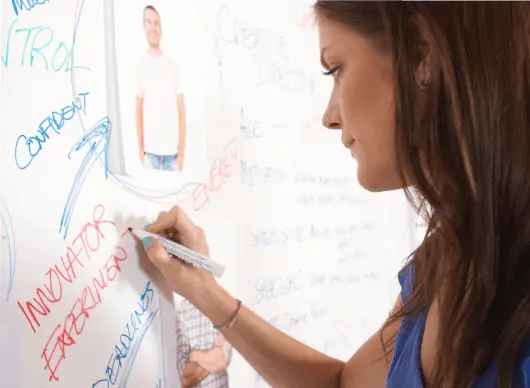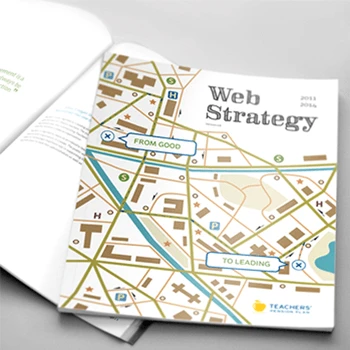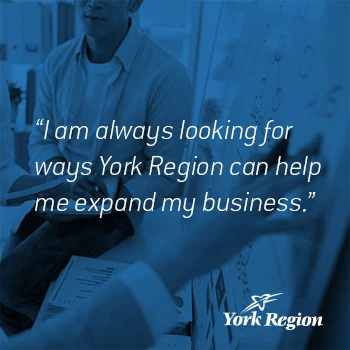What exactly are user personas and how do they differ from market segments?
User personas are research-based representations of specific user groups who share common goals and needs with your product or service. Unlike market segments that focus on demographics, personas are defined by usage goals and behaviors. They're not average users but specific characters with names, personalities, and detailed backgrounds based on real user research data from contextual inquiry, interviews, and observation.
Tip: Look for persona research that emphasizes usage goals over demographics - personas should tell you why people use your product, not just who they are.
How many personas should we typically create for our digital product?
Most digital products benefit from 2-8 personas, with 3-5 being the optimal range for most projects. The exact number depends on your product complexity and user diversity. Having too few personas misses important user differences, while too many becomes unmanageable and dilutes focus. We start by identifying all potential user groups, then consolidate based on similar usage goals and behaviors to reach a manageable number.
Tip: Start with primary personas (your most important users) and add secondary personas only if they have significantly different needs that impact design decisions.
What's the difference between user personas, customer personas, and service personas?
User personas focus on people who interact with your product after purchase, emphasizing task completion and functionality needs. Customer personas represent people in the buying process, focusing on decision-making criteria and purchase motivations. Service personas encompass the entire service experience, including ongoing support and relationship management. Each type serves different design and business purposes within the overall experience.
Tip: Consider your specific design challenges - if you're improving product usability, focus on user personas; if you're optimizing conversion, prioritize customer personas.
How do personas relate to the Experience Thinking framework?
Within Experience Thinking, personas help design connected experiences across all four quadrants: Brand, Content, Product, and Service. Personas inform how each quadrant should be designed to serve user needs consistently. They ensure that brand personality, content strategy, product features, and service delivery all align with user goals and expectations throughout the complete experience lifecycle.
Tip: Use personas to check consistency across all experience touchpoints - your brand persona should align with your user persona's expectations and preferences.
What makes a persona effective versus just a demographic description?
Effective personas are research-based, goal-oriented, and actionable. They include specific usage scenarios, pain points, motivations, and behavioral patterns that directly inform design decisions. Unlike demographic descriptions, effective personas tell you what users want to accomplish, how they currently solve problems, and what frustrates them. They include enough detail to help teams make specific design choices.
Tip: Test persona effectiveness by asking your team to make a design decision using the persona - if they can't, the persona needs more behavioral detail.
How do personas support user-centered design decisions?
Personas keep real users at the center of design decisions by providing a reference point for evaluating design options. They help teams ask 'How would Sarah use this feature?' rather than 'What do we think users want?' Personas remind designers that they're not the target audience and provide specific user needs and goals to validate design choices against.
Tip: Use personas in design reviews and decision meetings - if you can't explain how a design choice serves a specific persona's goals, reconsider the decision.
What's the relationship between personas and user stories or scenarios?
Personas provide the 'who' while user stories and scenarios provide the 'what' and 'how.' User stories describe specific tasks personas need to accomplish, while scenarios detail the context and steps involved. Together, they create a complete picture of user needs and behaviors. Personas inform which user stories are most important, while scenarios help validate that personas are realistic and actionable.
Tip: Develop usage scenarios alongside personas to ensure they're grounded in realistic user behaviors and contexts.
What research methods do you use to create accurate personas?
We use a combination of primary research methods including user interviews, contextual inquiry, ethnographic observation, and surveys. We start with stakeholder interviews to capture existing knowledge, then conduct field research with real users to validate and expand understanding. Our approach combines qualitative methods for deep insights with quantitative methods for validation and prioritization.
Tip: Ensure persona research includes direct user contact - personas based solely on internal assumptions or secondary research lack the depth needed for effective design decisions.
How do you ensure personas are based on real user data rather than assumptions?
Every persona element is linked to specific research findings from our primary user research. We document the research sources for each persona characteristic, maintain detailed field notes, and create traceability between observations and persona attributes. We validate internal assumptions against external user research and adjust personas based on actual user behaviors and goals.
Tip: Ask to see the research evidence behind persona characteristics - legitimate personas should be able to trace every detail back to specific user research findings.
What's your process for conducting persona research interviews?
Our interview process focuses on understanding user goals, workflows, pain points, and contexts of use. We use structured interview guides that explore current behaviors, motivations, and needs while allowing flexibility to explore unexpected insights. We conduct interviews in users' natural environments when possible and combine interviews with observational techniques to capture both stated and actual behaviors.
Tip: Look for interview processes that go beyond demographics and preferences to understand actual user behaviors and the reasoning behind their choices.
How do you handle persona research for products with diverse user bases?
For diverse user bases, we first map the full spectrum of user types, then identify commonalities in goals and behaviors that allow for meaningful persona groupings. We ensure our research sample represents the diversity of your user base and avoid creating too many personas by focusing on shared usage patterns rather than demographic differences.
Tip: For diverse users, focus on behavioral patterns and usage goals rather than demographic characteristics - users from different backgrounds often share similar product needs.
What sample sizes do you typically use for persona research?
Sample sizes vary based on user diversity and research methods. For qualitative research, we typically conduct 8-15 interviews per persona type to reach saturation. For quantitative validation, we aim for 50-100 responses per persona segment. The key is reaching the point where additional research doesn't reveal new insights about user goals and behaviors.
Tip: Focus on research quality over quantity - deep insights from fewer well-chosen participants are more valuable than surface-level data from many participants.
How do you validate personas after they're created?
We validate personas through multiple methods including stakeholder review sessions, additional user research, and usability testing using persona-based scenarios. We check if personas accurately predict user behavior and whether they help teams make better design decisions. We also conduct follow-up interviews to ensure personas remain accurate as user needs evolve.
Tip: Plan for persona validation from the beginning - personas should be tested against real user behavior to ensure they're accurate and useful.
What challenges do you encounter in persona research and how do you address them?
Common challenges include accessing representative users, avoiding bias in research interpretation, and balancing detail with usability. We address these by working closely with your team for user recruitment, using structured analysis frameworks, and testing personas with actual design decisions. We also manage the challenge of creating personas that are detailed enough to be useful but not so complex they become unwieldy.
Tip: Be prepared for persona research to challenge existing assumptions - the most valuable personas often reveal unexpected insights about user needs and behaviors.
What information do you include in persona profiles?
Our persona profiles include names, roles, goals, motivations, pain points, usage contexts, system experience levels, and behavioral patterns. We capture environmental factors, collaboration needs, and triggers that drive product use. Each persona includes specific quotes, usage scenarios, and priority rankings to make them actionable for design teams.
Tip: Look for personas that include specific usage contexts and environmental factors - these details often drive important design decisions.
How do you prioritize personas when multiple user types exist?
We prioritize personas based on business value, frequency of use, and strategic importance. Primary personas receive the most design attention, while secondary personas are considered for specific features or scenarios. Prioritization considers both current user volumes and future business goals, ensuring design efforts focus on the most impactful user groups.
Tip: Establish clear prioritization criteria before persona development - this helps teams focus design efforts on the most important user groups.
What's your approach to creating persona names and personal details?
We create realistic names and personal details that help teams connect with personas while avoiding stereotypes. Names and details are chosen to be memorable and representative of the user group without being distracting. We focus on details that relate to product usage and avoid irrelevant personal information that doesn't inform design decisions.
Tip: Persona names and details should enhance empathy and recall without becoming the focus - they should support understanding of user needs, not replace it.
How do you capture user goals and motivations in personas?
We distinguish between task-level goals (what users want to accomplish immediately) and life goals (what users want to achieve broadly). We capture both explicit goals that users can articulate and implicit goals revealed through behavior observation. Motivations include both positive drivers (what users want to achieve) and negative drivers (what they want to avoid).
Tip: Look for personas that capture both immediate task goals and broader life goals - understanding both levels helps create more meaningful user experiences.
What role do user quotes play in persona development?
User quotes bring personas to life by providing authentic voice and perspective. We select quotes that reveal key attitudes, pain points, or motivations that inform design decisions. Quotes help teams understand not just what users do, but how they think about their tasks and challenges. They provide memorable ways to communicate key persona insights.
Tip: Look for personas with quotes that reveal user attitudes and reasoning, not just preferences - these insights often drive the most impactful design decisions.
How do you handle personas for B2B products with complex user hierarchies?
For B2B products, we create personas that represent different roles in the decision-making and usage process. We distinguish between economic buyers, technical evaluators, and end users, capturing their different goals and success criteria. We also consider organizational context and how different roles interact with each other and your product.
Tip: In B2B contexts, map the complete user ecosystem including decision makers, influencers, and end users - each may have different needs from your product.
What formats do you use for persona documentation and sharing?
We create persona documentation in formats that work best for your team's workflow. This might include one-page persona cards, detailed persona profiles, interactive digital personas, or presentation materials. We ensure personas are easily shareable and accessible to all team members who need to reference them during design and development.
Tip: Choose persona formats that fit your team's working style - personas need to be easily accessible and regularly referenced to be effective.
How do you help teams integrate personas into their design process?
We work with your team to embed personas into existing design workflows, including design reviews, user story creation, and feature prioritization. We provide training on using personas effectively and create templates that help teams apply personas to specific design decisions. We also establish processes for keeping personas current and relevant.
Tip: Plan for persona adoption support - even well-researched personas won't impact design without proper integration into your team's workflow.
What's your approach to getting stakeholder buy-in for persona research?
We demonstrate persona value by connecting them to specific business outcomes and design decisions. We involve stakeholders in the research process when possible and show how personas address current design challenges. We provide examples of how personas have improved other products and create quick wins that demonstrate immediate value.
Tip: Start with pilot projects that show clear persona value rather than trying to change the entire organization at once - success stories build broader adoption.
How do you train teams to use personas effectively?
Our training covers persona interpretation, application to design decisions, and integration into existing processes. We provide workshops that practice using personas for specific design challenges and create reference materials that help teams apply personas consistently. We also address common persona misuses and provide guidelines for effective persona application.
Tip: Invest in persona training for your team - even excellent personas won't improve design if team members don't know how to use them effectively.
What common mistakes do teams make when using personas?
Common mistakes include treating personas as real users rather than research tools, focusing on demographics over goals, creating too many personas, and not updating personas as user needs evolve. Teams sometimes use personas to validate existing design decisions rather than guide new ones, or create personas without sufficient research backing.
Tip: Regularly audit how your team uses personas and address misuse patterns - persona effectiveness depends on proper application, not just creation.
How do you ensure personas remain relevant as products evolve?
We establish processes for persona maintenance including regular user research updates, feedback collection from customer-facing teams, and periodic persona validation studies. We also create triggers for persona updates based on product changes, user feedback, or market shifts. Personas should be living documents that evolve with your understanding of users.
Tip: Budget for persona maintenance - outdated personas can mislead design decisions and are worse than no personas at all.
What metrics do you use to measure persona effectiveness?
We measure persona effectiveness through design decision quality, team adoption rates, and user satisfaction improvements. We track how often personas influence design choices, whether they help teams make user-centered decisions, and if products developed with personas better meet user needs. We also measure team confidence in understanding user needs.
Tip: Define persona success metrics upfront - this helps demonstrate value and guides improvements to your persona program.
How do personas support agile development processes?
Personas support agile development by providing consistent user context across sprints and helping teams make quick user-centered decisions. They inform user story creation, sprint planning, and feature prioritization. Personas help maintain user focus even when development timelines are compressed and detailed user research isn't possible for every decision.
Tip: Create lightweight persona reference materials that can be quickly consulted during agile planning sessions - detailed personas won't be used if they're too complex for fast-paced environments.
How do you ensure persona research quality and avoid bias?
We use structured research protocols, diverse participant samples, and multiple researchers to minimize bias. We separate data collection from interpretation phases and validate findings through multiple methods. We also document our research process and assumptions to enable quality review and maintain transparency about research limitations.
Tip: Ask to see the research methodology and bias mitigation strategies - quality persona research should be able to demonstrate systematic approaches to reducing researcher and selection bias.
What's your approach to handling edge cases and outlier users?
We identify edge cases and outliers during research but focus personas on common behavioral patterns that represent significant user groups. We document edge cases separately and consider them for specific feature decisions or secondary personas. The goal is creating personas that guide design for the majority while acknowledging exceptions exist.
Tip: Don't let outlier users dominate persona creation - focus on patterns that represent significant user groups while documenting exceptions for specific design considerations.
How do you balance persona detail with usability?
We create personas with enough detail to guide design decisions without overwhelming teams with unnecessary information. We focus on details that directly inform product decisions and present information in scannable formats. We often create multiple formats - detailed profiles for deep research and summary cards for quick reference.
Tip: Test persona usability with your team - if personas are too detailed to use regularly, they won't impact design decisions effectively.
What's your process for peer review and validation of persona research?
Our persona research undergoes peer review by senior researchers who weren't involved in the original research. We validate findings against multiple data sources and check for consistency across different research methods. We also review personas with client stakeholders who have user-facing experience to ensure accuracy and completeness.
Tip: Insist on peer review for persona research - an outside perspective can catch bias or gaps that the original research team might miss.
How do you handle conflicting research findings when creating personas?
Conflicting findings often reveal important user segments or contextual differences that need to be captured in personas. We investigate conflicts by examining participant characteristics, usage contexts, and research methods. Rather than averaging out differences, we identify what drives different behaviors and create personas that reflect these meaningful variations.
Tip: Don't ignore conflicting research findings - they often reveal important user segments or usage contexts that need different design approaches.
What documentation do you provide to support persona research findings?
We provide comprehensive documentation including research methodology, participant profiles, raw data summaries, and analysis frameworks. We create traceability between research findings and persona characteristics, allowing teams to understand the evidence behind each persona element. We also document research limitations and assumptions.
Tip: Request detailed research documentation - this enables your team to understand persona strengths and limitations and make appropriate design decisions.
How do you ensure persona research meets academic and professional standards?
Our persona research follows established UX research methodologies and includes proper participant consent, ethical considerations, and data protection measures. We use validated research techniques and maintain professional standards for participant recruitment, data collection, and analysis. We also stay current with best practices in persona development.
Tip: Verify that persona research follows ethical guidelines and professional standards - this protects both participants and your organization while ensuring research quality.
What ROI can we expect from investing in persona research?
Persona research ROI comes from improved design decisions, reduced development iterations, and better user satisfaction. Teams using personas make more user-centered design choices, reducing the need for costly post-launch fixes. Personas also help prioritize features based on user needs rather than internal assumptions, improving product-market fit and user adoption.
Tip: Track design decision quality and development efficiency before and after persona implementation to demonstrate ROI - the value often shows up in reduced rework and improved user satisfaction.
How do personas contribute to product strategy and roadmap planning?
Personas inform product strategy by clarifying which user needs should drive feature development and business decisions. They help prioritize roadmap items based on user impact and guide resource allocation toward features that serve primary user goals. Personas also identify new product opportunities by revealing unmet user needs.
Tip: Use personas in strategic planning sessions to ensure product roadmaps align with user needs rather than just technical possibilities or competitive pressures.
What evidence do you have that personas improve product outcomes?
We have extensive experience with products that achieved improved user satisfaction, increased adoption rates, and reduced support costs after implementing persona-driven design. Our case studies show how personas help teams make better design decisions and create products that better meet user needs. We can provide specific examples relevant to your industry and product type.
Tip: Ask for case studies and metrics that demonstrate persona impact on products similar to yours - this helps set realistic expectations for your investment.
How do personas support competitive differentiation?
Personas help create competitive differentiation by ensuring your product serves specific user needs better than generic solutions. Deep user understanding enables more targeted feature development and user experience optimization. Personas also reveal opportunities for innovation by identifying unmet needs that competitors haven't addressed.
Tip: Use persona insights to identify user needs that competitors aren't addressing well - this can guide differentiation strategies and innovation opportunities.
What's the relationship between personas and customer acquisition?
Personas improve customer acquisition by helping teams understand what motivates users to try and adopt new products. They inform marketing messaging, onboarding experiences, and feature prioritization that aligns with user needs. Personas also help identify the most valuable user segments to target for acquisition efforts.
Tip: Share personas with marketing and sales teams to ensure customer acquisition efforts align with the users you're designing for.
How do personas impact user retention and satisfaction?
Personas improve retention by ensuring products meet ongoing user needs rather than just initial impressions. They help teams understand what keeps users engaged long-term and identify potential churn risk factors. Personas also guide feature development toward capabilities that provide sustained value to users.
Tip: Use personas to analyze user lifecycle stages and identify intervention points that could improve retention - different persona needs may emerge over time.
What's the long-term value of persona research for organization capability?
Persona research builds organizational capability for user-centered design thinking. Teams that work with personas develop better instincts for user needs and make more user-centered decisions even when personas aren't explicitly referenced. This cultural shift toward user focus creates lasting competitive advantage.
Tip: Consider persona research as building organizational capability, not just creating artifacts - the thinking process and user empathy developed are often more valuable than the personas themselves.
What's the typical timeline for persona research projects?
Persona research projects typically take 6-12 weeks, depending on user complexity and research depth. This includes planning (1-2 weeks), primary research (3-4 weeks), analysis and persona creation (2-3 weeks), and validation (1-2 weeks). We can adapt timelines based on your needs and can provide rapid persona development for urgent projects.
Tip: Allow sufficient time for primary research with real users - rushed persona development based on limited research often creates misleading user representations.
What level of involvement is required from our team?
We need significant involvement during project planning and persona validation phases. Your team provides context about business goals, helps with user recruitment, and participates in persona review sessions. We also need input from customer-facing team members who can provide insights about user behaviors and needs.
Tip: Plan for meaningful team involvement throughout the project - personas work best when they're developed collaboratively with internal stakeholders.
How do you handle user recruitment for persona research?
We work with your team to identify and recruit representative users through your existing customer base, professional networks, and specialized recruitment services. We develop screening criteria that ensure participants represent your target user groups and handle all recruitment logistics, scheduling, and participant communication.
Tip: Be prepared to help with user recruitment, especially for niche or specialized user groups - your existing relationships often provide the best access to representative users.
What deliverables do you provide for persona research projects?
Our deliverables include detailed persona profiles, research methodology documentation, usage scenarios, and implementation guidance. We provide personas in multiple formats including detailed profiles, summary cards, and presentation materials. We also deliver research findings that didn't make it into personas but might inform other design decisions.
Tip: Specify deliverable formats that work best for your team's workflow - personas need to be in formats that encourage regular use and reference.
How do you adapt persona research for different industries?
We adapt our research methods to industry-specific contexts, regulatory requirements, and user behaviors. For healthcare, we consider privacy regulations; for finance, we address security concerns; for B2B software, we focus on workplace contexts. We also adjust our research approach based on industry-specific user behaviors and decision-making processes.
Tip: Choose research partners with experience in your industry - they'll understand the specific constraints and opportunities that affect your user research.
What ongoing support do you provide after persona delivery?
We provide ongoing support including persona implementation guidance, team training, and periodic persona updates. We can also conduct follow-up research to validate personas against real user behavior and help teams adapt personas as products evolve. Our goal is ensuring personas remain valuable tools for your team.
Tip: Plan for ongoing persona support - the initial research is just the beginning of building a user-centered design culture.
How do you handle confidentiality and data protection for persona research?
We implement strict data protection measures including secure data storage, participant anonymization, and confidentiality agreements. All research materials are protected according to relevant privacy regulations and your organization's security requirements. We also ensure that persona documentation protects participant privacy while providing useful insights.
Tip: Verify that persona research processes meet your organization's data protection requirements and relevant privacy regulations before beginning the project.












